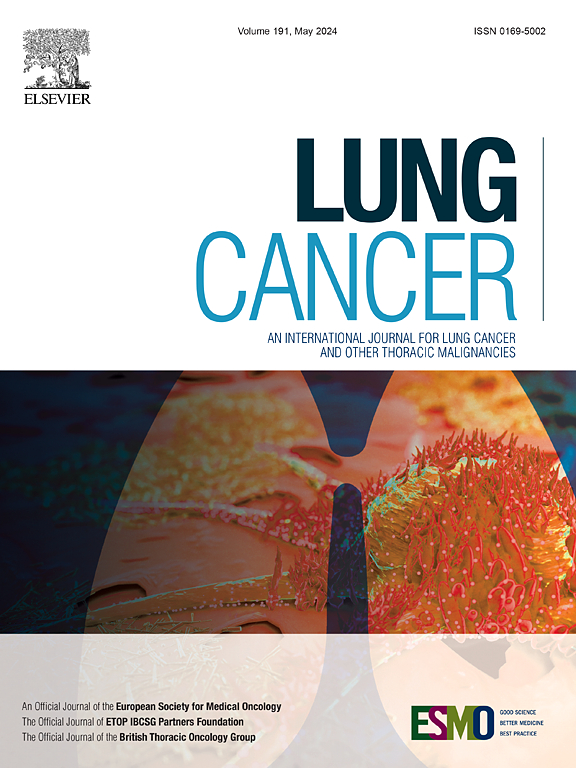DNA damage repair gene alterations influence the tumor immune microenvironment in advanced non-small cell lung cancer
IF 4.5
2区 医学
Q1 ONCOLOGY
引用次数: 0
Abstract
Purpose
DNA damage response and repair (DDR) gene alterations contribute to genomic instability and increased tumor immunogenicity, yet their clinical significance in non-small cell lung cancer (NSCLC) remains unclear. Using a large real-world dataset, we evaluated the prevalence of DDR alterations and their relation to the tumor immune microenvironment in metastatic NSCLC.
Experimental design
We retrospectively analyzed real-world data from patients with metastatic NSCLC using the Tempus AI database. Tumors were sequenced with Tempus xT DNA and xR RNA assays and classified based on the presence (DDRmt) or absence (DDRwt) of a pathogenic somatic alteration or copy number deletion in a DDR pathway gene. Associations between DDR alterations and immune cell infiltration, PD-L1 immunohistochemistry, tumor mutational burden (TMB), and microsatellite instability (MSI-H) were examined.
Results
Among 14,127 patients (median age = 67, 49% female), 5,276 (37%) were DDRmt. There was a higher prevalence of current/former smokers in the DDRmt group (86% vs. 82%; p<0.001). DDRmt tumors were more likely to have higher levels of TMB (median: 5.4 vs. 4.6; p<0.001), MSI-H (1.1 % vs. <0.1 %; p<0.001), and infiltrating CD8+ T cells (p=0.003) compared to DDRwt tumors. A lower frequency of macrophages (p<0.001) were observed among DDRmt compared with DDRwt tumors with no difference in PDL1 positivity.
Conclusions
Among patients with metastatic NSCLC, 37% present with DDRmt tumors characterized by higher TMB, frequency of MSI-H, and changes in immune cell infiltrates. These findings provide insight into the immunogenic landscape of DDR-altered NSCLC and may inform biomarker selection and therapeutic strategies.
求助全文
约1分钟内获得全文
求助全文
来源期刊

Lung Cancer
医学-呼吸系统
CiteScore
9.40
自引率
3.80%
发文量
407
审稿时长
25 days
期刊介绍:
Lung Cancer is an international publication covering the clinical, translational and basic science of malignancies of the lung and chest region.Original research articles, early reports, review articles, editorials and correspondence covering the prevention, epidemiology and etiology, basic biology, pathology, clinical assessment, surgery, chemotherapy, radiotherapy, combined treatment modalities, other treatment modalities and outcomes of lung cancer are welcome.
 求助内容:
求助内容: 应助结果提醒方式:
应助结果提醒方式:


